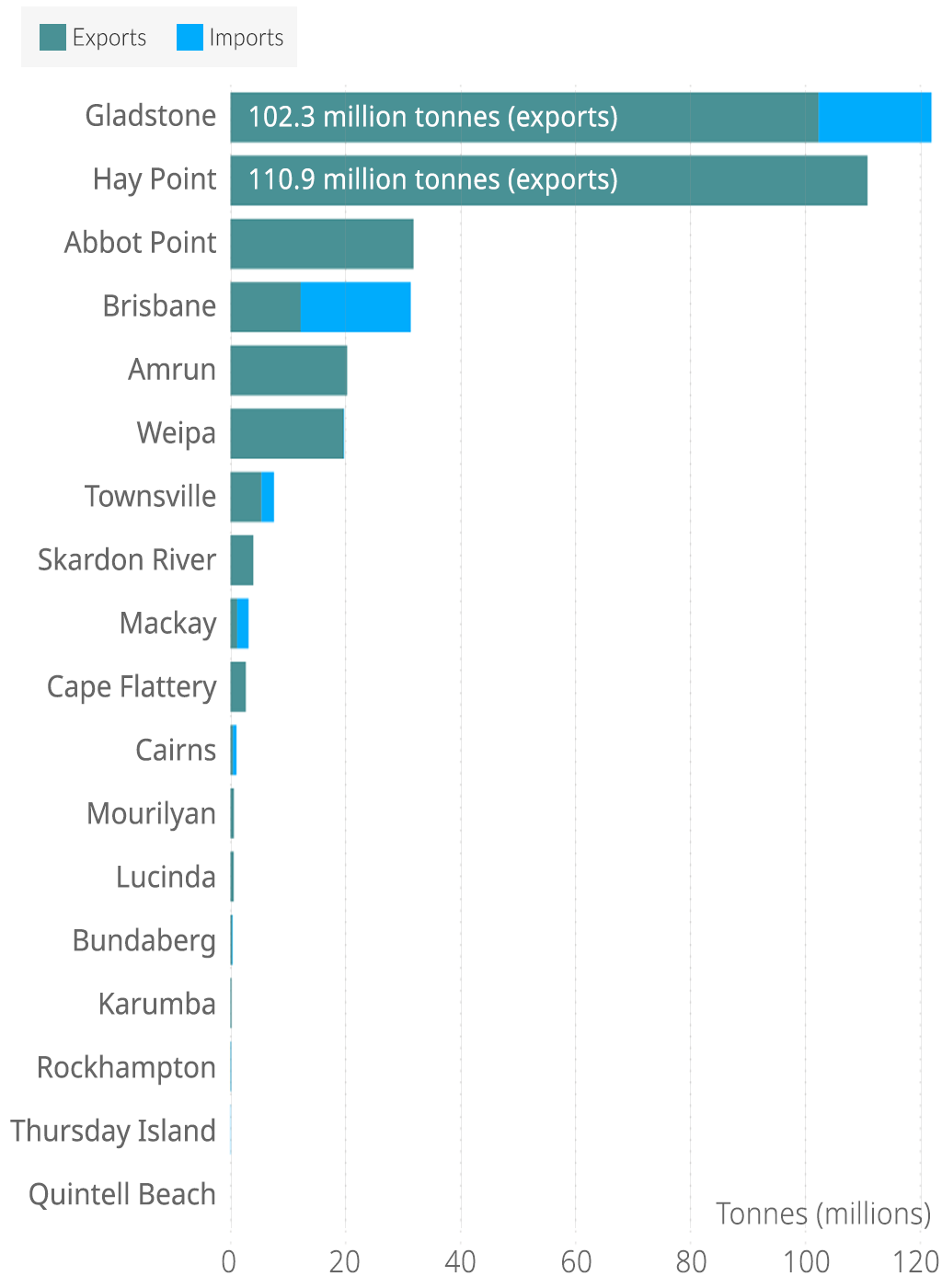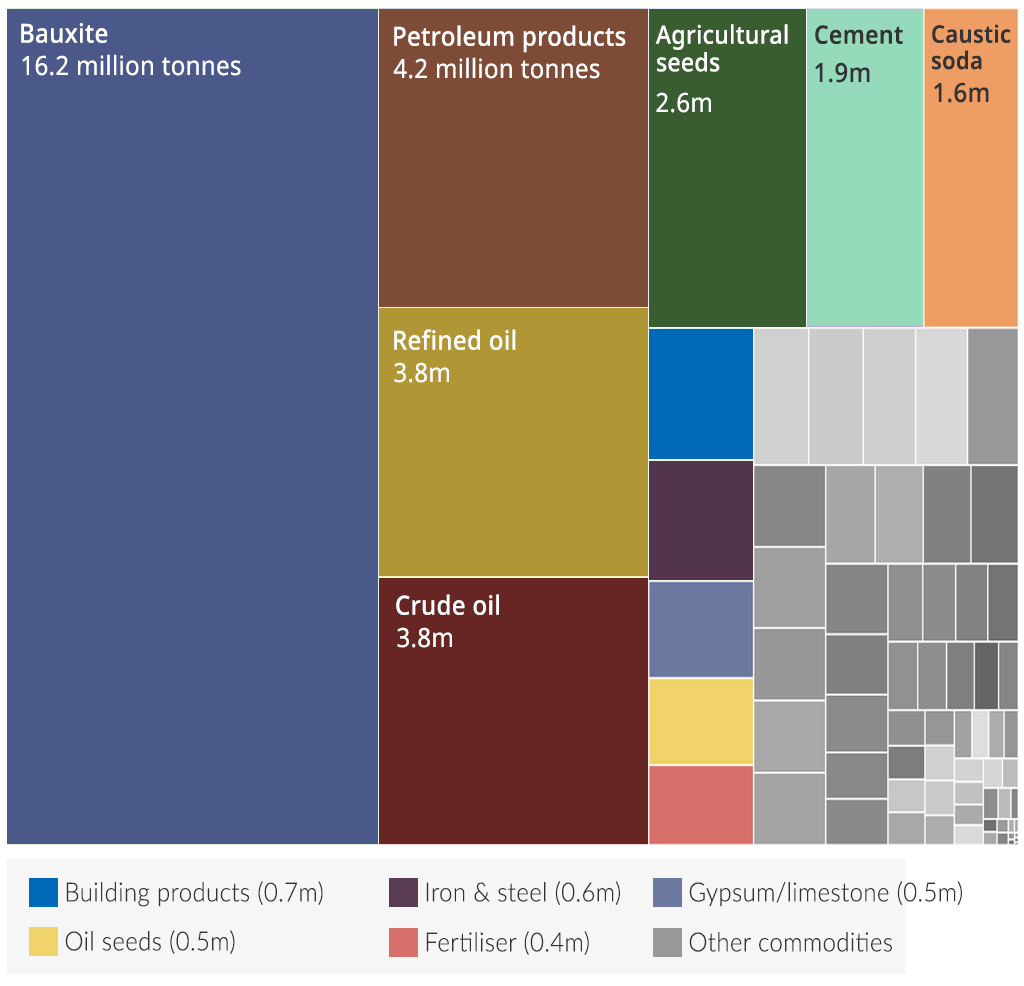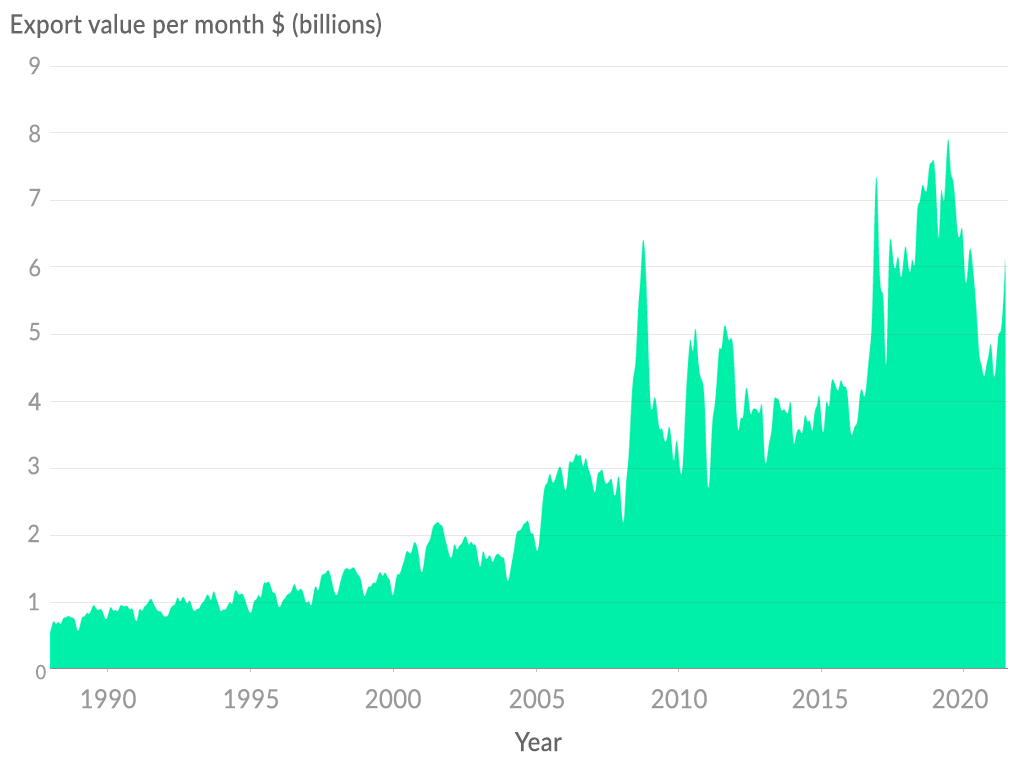There are 21 ports in Queensland, ranging from small community ports to large dedicated coal terminals and multi-cargo ports. And they are some of the busiest ports in Australia.
The Trade Statistics for Queensland is an annual report released by the Department of Transport and Main . The data for 2019–20 is available on Queensland's Open Data , and provides statistics related to imports and exports of commodities.
In the 2019-20 financial year, Queensland’s port system’s total throughput (i.e. exports and imports) was 356.8 million tonnes. Exports were the most significant component of throughput — 312.9 million tonnes (or about 88%) compared to 43.9 million tonnes in imports.
Queensland port throughput (export and import volume), 2019-20, Tonnes (million

If we look closer at two of the larger ports — Brisbane and Gladstone — we can see they have quite different profiles in terms of what is imported and exported.
The Brisbane port imports more than it exports — 19.2 million tonnes imported compared to 12.2 million tonnes exported. Maybe somewhat surprisingly given the urban location, the highest throughput item in 2019-20 was coal exports. But most of the imports of refined oil, crude oil, agricultural and building materials come in via Brisbane.
About 500km to the north in Gladstone, the port mainly exports goods — 102.3 million tonnes of exports compared to 19.6 million tonnes of imports. And being close to the mining regions, no surprise here to see that coal and LNG dominate.
Coal and minerals dominate Queensland’s exports
In 2019-20, Queensland exported 82 different classes of commodities from its ports, with coal being by far the most exported commodity. In 2019-20, 219.9 million tonnes of coal were exported — making up about 70% of total exports for the financial year. Bauxite was the next most exported commodity, with 43.9 million tonnes exported in 2019-20.
Most of the coal is exported from the ports of Gladstone (71.7 million tonnes) and Hay Point (110.9 million tonnes). Hay Point, located south of Mackay, is a dedicated coal port and exports coal from mines in the Bowen Basin. It's one of the largest export coal ports in the world. The Port of Gladstone is Queensland's largest multi-commodity port and contains the world’s fourth largest coal export terminal (by throughput).
Other significant exports include LNG, alumina, sugar, silica sand, cement and timber.
Queensland’s export commodities, 2019-20, Tonnes (million)

Queensland’s import commodities, 2019-20, Tonnes (million)

Queensland’s share of Australian exports
In terms of throughput, Queensland ports are the second busiest in Australia, after Western Australia. Data from the Bureau of Infrastructure and Transport Research (BITRE) for 2018-2019 show that total exports in Queensland was 311.1 million tonnes; Western Australia exported a whopping 968.9 million tonnes, with the Port Headland port alone exporting 506.3 million tonnes. New South Wales ports exported 177.6 million tonnes.
In terms of monetary value, International Merchandise data from the Australian Bureau of Statistics shows the long term growth of Australia's exports. The mining states, with Western Australia in particular, have done well.
Value of exports per month as a proportion by state (%), January 1988 to June 2021

The COVID pandemic has not negatively impacted Western Australia, with the value of its exports surging, driven by strong iron ore prices. The value of Queensland exports has declined since about September 2019, but a sharp rise in the price of coal since May 2021 should increase the value of exports in the coming months.
Value of Queensland exports per month, January 1988 to June 2021

If you dive deeper into this data or related datasets, we recommend consulting the researchers or data custodians to understand the nuances of the data. And if you have analysed this dataset (or a related dataset), we’d love to hear from you! Get in touch via Twitter ( ) or our website.
The latest Trade Statistics for Queensland report is available at the Department of Transport and Main Roads site. The associated data is available on Queensland's Open Data .

